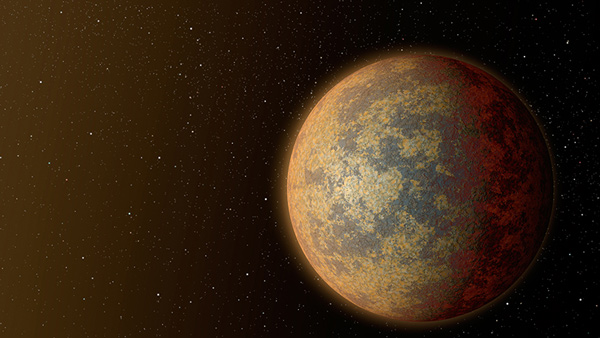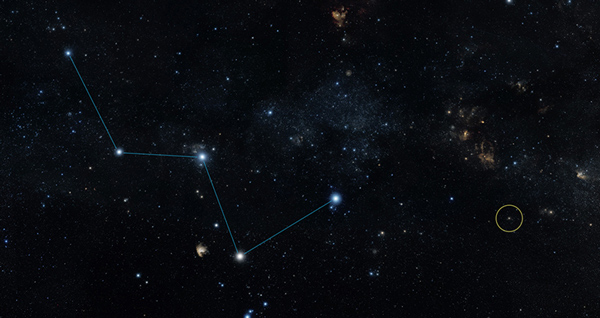Discover new planet 21 light-years away from Earth
NASA's Spitzer Space Telescope has just discovered a planet made of rock like Earth and located only 21 light-years away, the closest of any known planetary planet. .
Detect Earth's "neighbor" planet
It is much closer to the "Earth 2.0" planet (1,400 light years) that people recently discovered. The planet is 1.6 times larger than the Earth , 4.5 times heavier, also flying around an Earth-like Sun but unfortunately it flies too close (flying for 3 days) so humans will not can live and in the future will only serve the main purpose of research.

Photo of planetary simulation HD 219134b
This planet, called HD 219134b, belongs to the constellation Cassiopeia , we cannot see it with the naked eye, but we can see the star it is flying around (see picture and video above). Although not very meaningful in terms of living, it will be a great source of library for telescopes to learn and delve into the nature and process of the planets.

How to determine the location of HD 219134b with the naked eye, a small circle of light is actually a star that the planet HD 219134b is flying around.
Although the basic conditions such as size and weight are quite ideal compared to Earth, but due to flying too close to its Sun, the water cannot survive under excessive heat. And this is also the reason why we cannot live on this planet. But in return scientists can take advantage of this very close distance to learn more about it, through new telescopes such as the James Webb Space glass that will be launched in 2018. Similar planets As with HD 219134b, there is a lot in the universe, but unfortunately we do not understand much about them, having a planet near this "neighbor" like this makes people feel very excited because it is like having A bookstore next door can search and read the study at any time without going anywhere.

The depiction of planetary description HD 219134b is flying around its sun
Apart from the aforementioned planet, it is known that at least three other planets are also flying around this sun . One fly out of the Sun's circle takes 6.8 days, one takes 47 days and the other takes 1,190 days, too far from our 365-day flight cycle. Considering that the two solar systems have the same temperature, the longer the planets fly around the longer it means that the farther away from the Sun the less the temperature will be obtained from the Sun, and the faster the flight will lie Near the Sun, the heat will be hot, both difficult for humans to live.
- Discovering the planet 13,000 light-years away from Earth
- Discover an earth-like planet that can have life
- Discover more planets 'brothers of the Earth' and can survive life
- Photographing the planet 300 light years from Earth
- Young Jupiter-like planet is 97 light-years away from Earth
- Discover planet full of water
- Your planet is closest to Earth
- Discovering strange planets that have 4
- Catch the light from super-earth
- NASA claims Proxima b Earth-like planet b does not support life
- The discovery of a rock planet is very similar to the globe
- Discover new dwarf planets in the Solar System
 Van Allen's belt and evidence that the Apollo 11 mission to the Moon was myth
Van Allen's belt and evidence that the Apollo 11 mission to the Moon was myth The levels of civilization in the universe (Kardashev scale)
The levels of civilization in the universe (Kardashev scale) Today Mars, the sun and the Earth are aligned
Today Mars, the sun and the Earth are aligned The Amazon owner announced a secret plan to build a space base for thousands of people
The Amazon owner announced a secret plan to build a space base for thousands of people NASA's 'Ninth Planet' Shows Signs of Being Friendly to Life
NASA's 'Ninth Planet' Shows Signs of Being Friendly to Life  Which planet is the oldest and youngest in the Solar System?
Which planet is the oldest and youngest in the Solar System?  Breakthrough discovery of planet with more water than Earth
Breakthrough discovery of planet with more water than Earth  How would humans die when visiting other planets?
How would humans die when visiting other planets?  Habitable planet appeared next to Earth, but met with disaster
Habitable planet appeared next to Earth, but met with disaster  Chinese spacecraft discovers mysterious cubes on other planets
Chinese spacecraft discovers mysterious cubes on other planets 